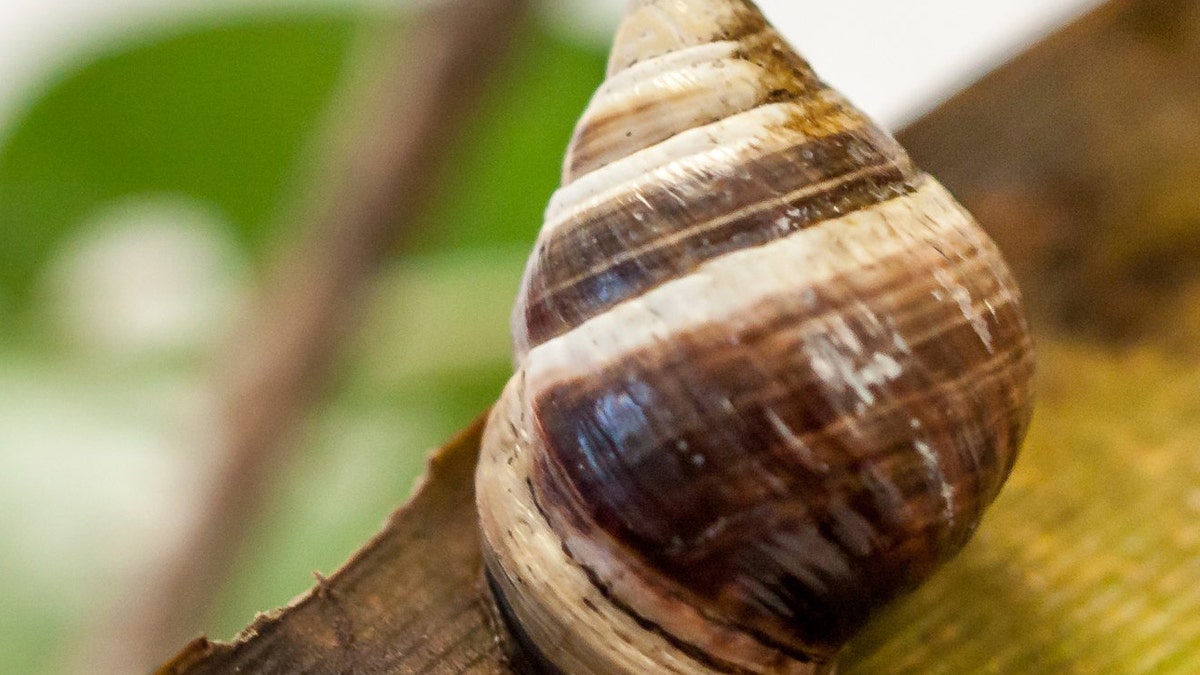
George, the last known Achatinella apexfulva, died on New Year’s Day 2019. (Hawaii Department of Land and Natural Resources)
George, a Hawaiian tree snail who lived to the age of 14 and is the last known snail of his kind, has died.
The beloved and rare snail, who is named after the Pinta Island tortoise "Lonesome George," was a local celebrity — mostly among children. It died on New Year's Day, officials said.
According to the Hawaii Department of Land and Natural Resources, the Achatinella apexfulva was the first of over 750 species of land snail from the Hawaiian Islands to be described by Western science. In 1997, the last of 10 were brought to a University of Hawaii laboratory for captive rearing, but when the lab experienced a die-off, they all perished except for George.
Although researchers labeled George a "he," the snail was a hermaphrodite, having both male and female parts. Sadly, researchers were never able to find another member of the species for George to mate with. George matured in a cage by himself, feeding on fungus.
THOUSANDS OF FEMALE PENGUINS ARE BEING STRANGED IN SOUTH AMERICA
"For a snail he was a little bit of a hermit," David Sischo, a wildlife biologist with the Hawaii Invertebrate Program, told NPR. "I very rarely saw him outside of his shell."
Sischo added that George likely died of old age, as 14 is "up there in snail years."
Throughout his life, George was often in the spotlight, serving as a symbol for the plight of all Hawaiian snails. He was frequently featured in newspaper, magazine and online articles, and hundreds of delighted school children and visitors to the lab eagerly viewed him.
MYSTERIOUS SOUNDS RECORDED AT CUBA EMBASSY WERE...CRICKETS
“I’m sad, but really, I’m more angry because this was such a special species, and so few people knew about it,” Rebecca Rundell, an evolutionary biologist with State University of New York who used to help care for George and his kin, told National Geographic.
The publication reports that George spent the last two years of his life inside a modular trailer, along with a few dozen other species of Hawaiian snail, that researchers dubbed "the love shack."
Hawaii's native snail populations have been hurt by a range of invasive species that have arrived, including rats and Jackson's chameleons, as well as climate change, according to scientists. A number of the island's other remaining land snails also face imminent extinction.
Researchers in California have also noted that the population of western monarch butterflies is "disturbingly low" as that species is facing is dealing with the region's severe weather, wildfires and droughts.
"I mean, he's the last of his kind. ... To have that last individual perish under your watch, it's pretty depressing," said Sischo.
CLICK HERE FOR THE FOX NEWS APP
However, all hope for this particular snail species may not be lost forever.
A two-millimeter snippet of George's foot was collected in 2017 for research purposes and the living tissue remains alive in a deep freeze container at San Diego's Frozen Zoo.
"While it is currently not possible to clone a snail, it certainly will be someday," said Hawaii's DLNR, adding: "George may yet live again!"




















